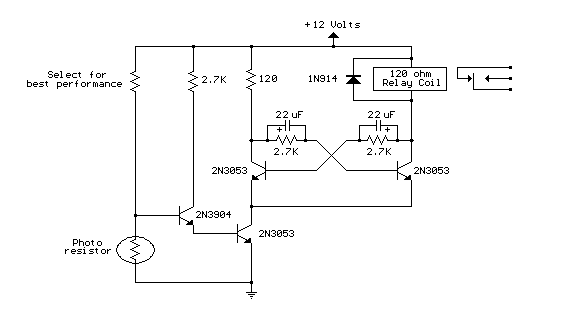Monday, December 16, 2013
Photo Sensor Control Relay
A photo or slightly activated relay normally open relay in the closed circuit / contact with the light. In this circuit, a photodiode is used to sense light. The photodiode has a high resistance in the absence of light strikes. The photodiode is connected to the reverse biased state. The only current flowing through it will be due to minority carriers.
Photo Sensor Control Relay Circuit Diagram
 When light falls on it, the minority current carriers in the wake of increasing the diode provides a low resistance. Because the voltage across the diode will not be sufficient to bias transistor Q1 and will be reset. Where there is darkness, the resistance increases photodiode and the voltage across it will be enough to move forward bias the transistor Q1 of the relay ON. The diode D2 is used as a diode to protect transistor switching transients produced relay. In this way, the load on the relay contacts can be switched on and off using light strikes the photodiode.
When light falls on it, the minority current carriers in the wake of increasing the diode provides a low resistance. Because the voltage across the diode will not be sufficient to bias transistor Q1 and will be reset. Where there is darkness, the resistance increases photodiode and the voltage across it will be enough to move forward bias the transistor Q1 of the relay ON. The diode D2 is used as a diode to protect transistor switching transients produced relay. In this way, the load on the relay contacts can be switched on and off using light strikes the photodiode.
Photo Sensor Control Relay Circuit Diagram

Related Posts : control,
photo,
relay,
sensor
Subscribe to:
Post Comments (Atom)
No comments:
Post a Comment